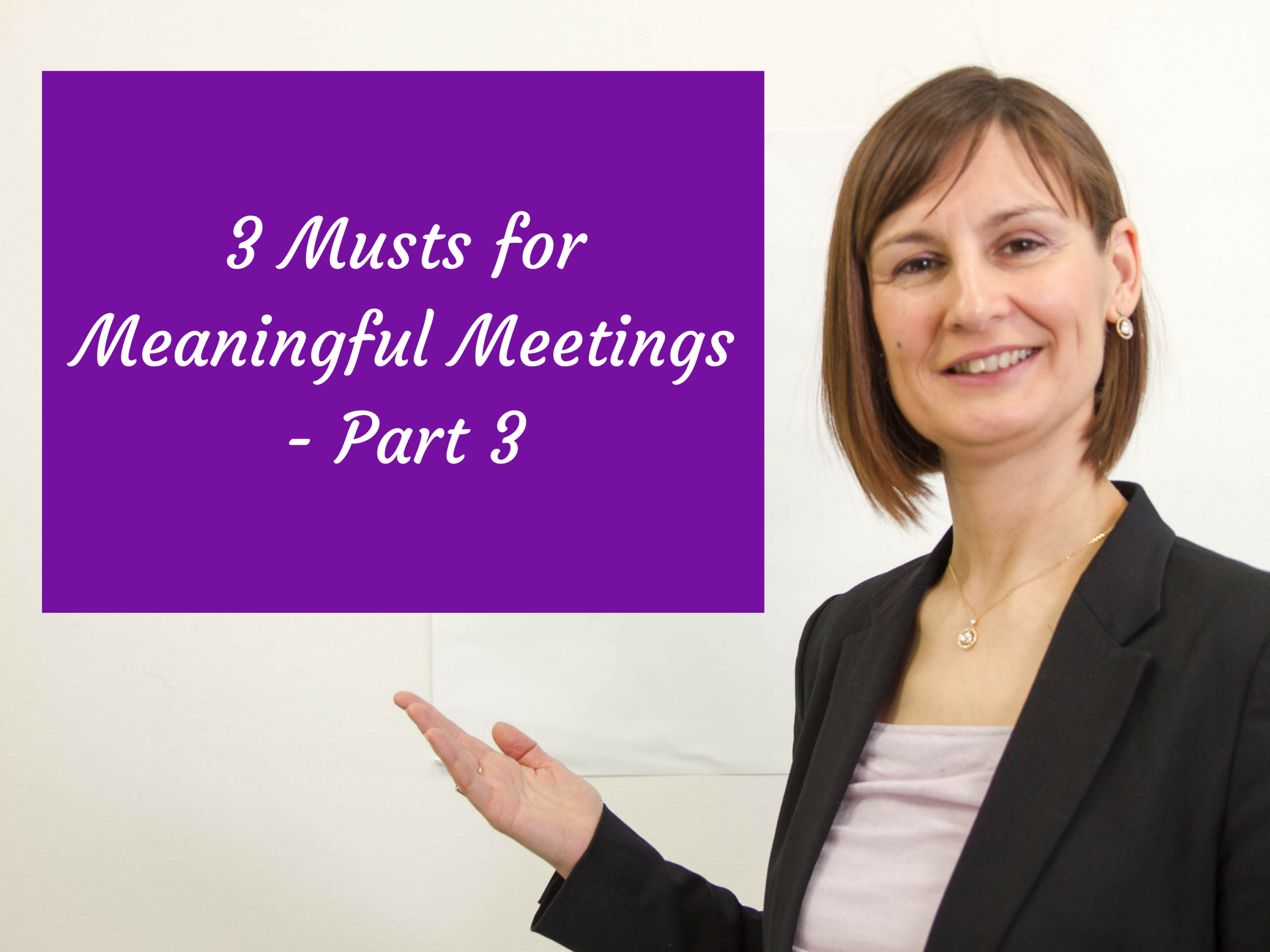Even if you clarify the meeting goals and roles of each participant, the conversation can easily go off track if the facilitator fails to align everyone on the ways that you will get things done in a meeting.
Let me give you two examples: brainstorming and decision making.
Ways to brainstorm in meetings
It’s important to get agreement on how you will brainstorm because there are many different ways. For example, meeting participants
- take turns to say their ideas
- say their ideas as they think of them, in no particular order
- work in pairs to come up with ideas and then share with the group
- split into groups and list ideas on flip charts
- quietly write ideas on Post-It notes and then stick them all on a whiteboard
Consider which approach is best for your goal and participants. Then propose the way to brainstorm and get everyone’s agreement. This keeps everyone focused and working efficiently.
Ways to make decisions in meetings
If you don’t have a decision maker in the meeting, you need to agree on the way to make decisions, as I mentioned in Part 2 of this series.
But there’s more than one way to make a decision.
Do you decide by consensus (everyone has to agree) or by majority (more than half agree)?
Picture this. It’s almost the end of a long meeting and you need to decide on an action. Of the seven people in the meeting, five vote for action A and two vote for action B.
If you agreed at the beginning of the meeting that a majority vote is the way to decide, the two who voted for B would have to accept this.
But if you didn’t get everyone’s agreement at the beginning, you may now have a frustrating and time-wasting conflict.
If you’re not the facilitator
As I mentioned in Part 1 of this series. if you’re not the facilitator, you can help to get everyone clear about the ways to get things done in meetings by asking. For example,
“When we decide on the action, will that be by majority or consensus?”
or
“I understand there are different ways of brainstorming. Which approach will we use?”
Now, here’s my question for you. Which of the 3 Musts for meaningful meetings do you find most useful?
Are you keen to understand more about how to run meaningful meetings? Do you read Japanese? If so, have a look at my book Eigo no Shigoto-jutsu (英語の仕事術), published by Shogakukan and available on Kindle, where I devote a whole chapter to facilitation skills and meeting roles.


